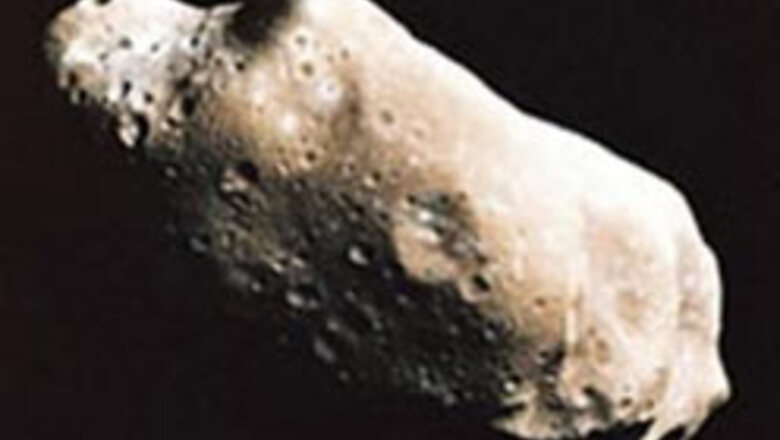
views
Washington: Sunlight can cause asteroids to spin more quickly, scientists said on Wednesday, showing anew just how dynamic a place our solar system can be.
International teams of scientists studying two asteroids, one about a mile wide and the other about 375 feet wide, confirmed a previously unproven theory that sunlight can affect the rotation of asteroids because they tend to be irregularly shaped and not perfectly round.
Stephen Lowry of Queen's University Belfast in Northern Ireland said the findings boost the understanding of the physical properties and dynamics of asteroids- hunks of metal and rock rattling around in space.
"This is important as asteroids are leftovers from the formation of the solar system, along with comets, and so by studying them we gain insights into what the solar system was like some 4.5 billion years ago," Lowry said by e-mail.
In research appearing in the journals Nature and Science, the scientists focused on the so-called YORP effect, named for four scientists who inspired the theory.
The idea is the Sun's heat serves as a propulsion engine on the irregular features of an asteroid's surface.
"YORP can accelerate or decelerate the rotation rate," Mikko Kaasalainen of the University of Helsinki in Finland said by e-mail.
When sunlight hits the asteroid, the solar energy is absorbed and then radiated back into space. When the asteroid is not spherical, this can create a push off parts of its surface that alters its spin.
"Depending on the exact shape, the effect on the entire asteroid's surface can lead to a net torque, which can slowly alter the time it takes the asteroid to make one full revolution," Lowry said.
Patrick Taylor of Cornell University in Ithaca, New York, added in a telephone interview, "Another way you can think of it is how wind causes a windmill to spin, or if you blow on a pinwheel it starts spinning."
PAGE_BREAK
The scientists calculated the expected strength of the YORP effect on the asteroids. These estimates essentially matched their measurements of the two asteroids' spin changes over a period of years.
"It really shows that the solar system is a very dynamic place and the Sun -- our star -- affects all worlds, not just Earth, not just the planets but even the smallest rocks orbiting the Sun," Taylor said.
Using large telescopes and radar facilities, the scientists watched as the spin of near-Earth asteroid 2000 PH5, the smaller one, increased by 1 millisecond per year. Its orbit takes it inside and outside Earth's orbit, and it has come as close to our planet as five times the distance to the moon.
"It is relatively small, and so more susceptible to the YORP effect. Also, it rotates very fast, with one day on the asteroid lasting just over 12 Earth minutes, implying that the YORP effect may have been acting on it for some time," Lowry said.
"Eventually it may spin faster than any known asteroid in the solar system," Lowry said.
Lowry said the YORP effect plays a role in changing asteroid orbits in the crowded Asteroid Belt between Mars and Jupiter, including moving them to planet-crossing orbits.
Kaasalainen said the increasing rotation speed of asteroid 1862 Apollo, the bigger one, probably will break it apart due to centrifugal forces. Noting the asteroid already has a small moonlet, he said it might have broken apart a bit already.
The researchers said the spin of this asteroid in the past 40 years has accelerated so much that it has an extra rotation per orbit around the Sun.


















Comments
0 comment